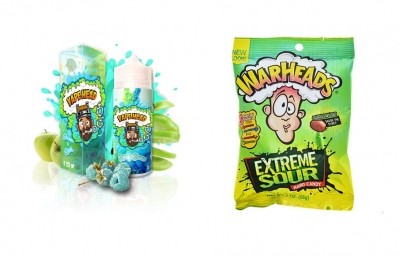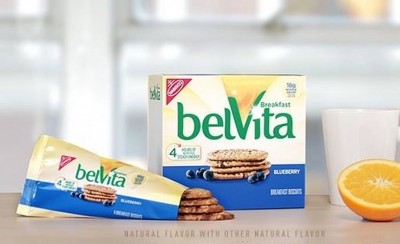Which food labeling claims put you most at risk of a class action lawsuit? (Spoiler alert… it’s not just ‘all-natural’)

The problem, said OFW Law attorneys Bruce Silverglade (principal) and Mason Weeda (associate) during a webinar hosted by the Food Institute last month, is that the FDA hasn’t gotten around to defining scores of claims routinely used on food packaging, from ‘natural,’ ‘wholesome’ and ‘nutritious’ to ‘made with whole grains’ (on which it has issued draft guidance, but not legislation), ‘artisan’ or ‘handcrafted.’
And that’s before you get onto the issue of whether dairy products from cows fed GM feed are ‘natural’ or whether an incidental additive approved for use in a natural flavor would render the final product it is used in ‘unnatural.’
“For the most part, there are more undefined claims than defined claims in the food industry,” said Silverglade.
“And these are subject to the state consumer protection laws,” whereby plaintiff’s attorneys will argue that a reasonable consumer would not consider a product containing 10g of added sugar to be ‘nutritious,’ or that tea or oatmeal containing trace levels of pesticide residue should be labeled ‘natural.’
What sources are plaintiff’s attorneys citing in lawsuits?
While plaintiff’s attorneys closely monitor FDA warning letters, they also pay attention to opinions from scientific bodies, consumer advocacy groups and organizations such as the World Health Organization, reports from which have been repeatedly cited in class action lawsuits over added sugars and glyphosate in recent months, noted Silverglade.
“Developments around the world can impact litigation here in the US… What can start as an article in a consumer group’s magazine can end up as class action litigation.”
Potential trouble spots
So where should food and beverage manufacturers tread particularly carefully if they want to avoid legal hot water? Below are just a handful of examples highlighted in the webinar:
- Added sugar: While the criteria for making ‘healthy’ nutrient content claims don’t even mention sugar, this hasn’t stopped plaintiff’s attorneys from targeting manufacturers they claim are misleading shoppers by portraying products high in added sugar as nutritious and wholesome. But how much added sugar is too much? This is a good example of where plaintiffs have seized upon WHO recommendations that we reduce added sugar intakes to 10% of energy (50g added sugar), and ideally aim to get below 5% (25g added sugar) for adults, noted Silverglade. So, for example, if you state or imply that a snack/beverage containing 20g of added sugar (40% or 80% of your daily recommended intake depending on which WHO figure you cite) is good for you, you could potentially face legal challenges. In fact, suggested Silverglade, “It’s dangerous to use ‘healthy’ with a product with more than 20% of the daily value for added sugars… so products with more than 10g of added sugars can make a healthy claim legally under FDA rules, but at their own risk when it comes to class action lawsuits.”
- No added sugar: Another area to watch out for is ‘no added sugar’ claims, a claim over which some 100% juice brands have recently been sued, said Silverglade. While the claim might be factually true, you are not allowed to make it if the products consumers might be comparing your product with would not normally contain added sugar.
- Value added ingredients used in insignificant amounts: Manufacturers should avoid overstating the importance of a value-added ingredient that’s used in an insignificant amount, said Silverglade, citing lawsuits against a range of brands from Minute Maid to Veggie Straws for providing top billing on the product label to an ingredient (veggies, chia, turmeric) that features way down the ingredients list.
- Wholegrain claims: While there is FDA draft guidance on this, it doesn’t cover all angles, and is not written into law, noted Silverglade, who advises companies “to avoid claims such as ‘made with whole grain flour’" if your predominant ingredient is not wholegrain flour. While a recent case taking issue with wholegrain claims on Cheezits was dismissed at the district court level, it is now on appeal, so remains “one to watch,” he said.
- Fruits and veggies in processed foods: In general, said Silverglade, “Don’t overstate a product’s health benefits or imply eating processed foods is equivalent to eating fresh fruits and vegetables.”
- Natural claims: “Absent formal FDA regulations, these cases will continue to flourish,” predicted Silverglade, who noted that any mention of completing the FDA's probe into natural claims was “conspicuously absent” from the agency's 2018 strategic roadmap, suggesting we are still no closer to a legal definition. While brands are careful to avoid natural claims on products containing artificial additives, plaintiff’s attorneys are now focusing on natural claims on products in which genetic engineering featured anywhere in the production process (or in feed for dairy cows), products containing even trace levels of pesticide residue, and “anything seen as heavily processed, even if from natural source.” Meanwhile, firms should simply avoid making natural claims on certain “lightning rod ingredients” such as high fructose corn syrup, even though the FDA has indicated it distinguishes between different production methods, he said: “My short advice is that if you are using HFCS, don’t say all natural…”
- Sins of omission: Brands should also be careful of sins of omission, said Silverglade, citing a case (Miller v Yucatan Foods) in which a guacamole product was labeled ‘95% avocado, 5% spices’ when it also contained other ingredients such as xanthan gum and evaporated cane juice (aka sugar).
- Country of origin: Just because you state on pack that your product is made in country x, you shouldn’t imply via words or imagery that it’s made somewhere else, said Silverglade, who noted that litigants have historically targeted the alcoholic beverage industry but could easily start targeting packaged foods and non-alcoholic beverages as well.
- Matching rivals’ claims: This might seem obvious, said Silverglade, but “Don’t make a risky claim just to keep up with a competitor. One thing we often hear is, well my competitor is making this claim, why can’t we make it? It may be that as you speak, your rival is on the phone with a class action attorney negotiating a settlement after receiving a demand letter threatening a lawsuit under California state law, for example.”
- Longstanding claims: Similarly, just because you’ve been making a certain claim for a long time doesn’t mean that it’s not exposing you to some risk, he said: “You should periodically review longstanding claims to ensure that they have not run afoul of contemporary legal standards being established by class action settlements.”
Who is at risk?
As to who is most at risk of class action lawsuits, “everyone is at risk,” from large firms to small, said OFW Law associate Mason Weeda, who noted that SMEs are increasingly being targeted, in part because they are less likely to have the funds to mount a serious defense.
As such, they are more likely to settle, perhaps even before cases have been formally filed.
“It’s true that the bigger the target, the bigger the settlement,” added Silverglade. However, smaller legal firms are increasingly targeting small to midsize food brands, he said: “If I’m a plaintiff’s attorney, I may avoid larger companies as they generally have more legal resources. The point is, everyone is at risk.”
Demand letters: ‘The complaints in court are just the tip of the iceberg’
One issue that deserves more attention is the number of cases that never make it to court, but still end up costing food manufacturers money, said Silverglade.
“Hundreds of companies receive private demand letters threatening suits and settle before a public court case is ever filed, but there’s no way of knowing how many are out there. The complaints in court are just the tip of the iceberg, many are settled before a complaint is filed.
“We’ve done an educated guestimate that probably for every case that ends up in court, roughly there are 10 other cases that were the subject of a private demand letter sent from a plaintiff class action attorney to a food company. So these are cases that were settled privately and never saw the light of day except in the food company’s bank account, which paid the class action attorney, the fees and costs and the damages to settle the case.”
Hardly any cases go to trial
As for cases that proceed through the courts, “virtually none” go to trial and get decided on the merits, he added: “The bottom line is that litigation is risky, costly, and relatively few defendants wish to proceed this far.”
Once defendants get to the stage where their motion to dismiss a case has been denied, they can file a motion for summary judgement, and if that is denied, discovery would follow, he said. “But at this point in a case, significant costs have been incurred, typically more than $100,000 in legal fees… If you get to the class certification stage, in almost all cases, the lawsuits are settled, sometimes for multi-million-dollar sums.
“It’s ultimately a business decision. If the claim is important to your business model, it may be worth investing several hundred thousand dollars to take a case all the way to the class certification stage, but the majority of cases are settled much earlier, or never even see the light of day…”
Find out more about the hot button issues in food litigation, from Prop 65 to natural claims at the American Conference Institute (ACI) food law conference in Chicago on April 23-24.
Get the full details HERE.













